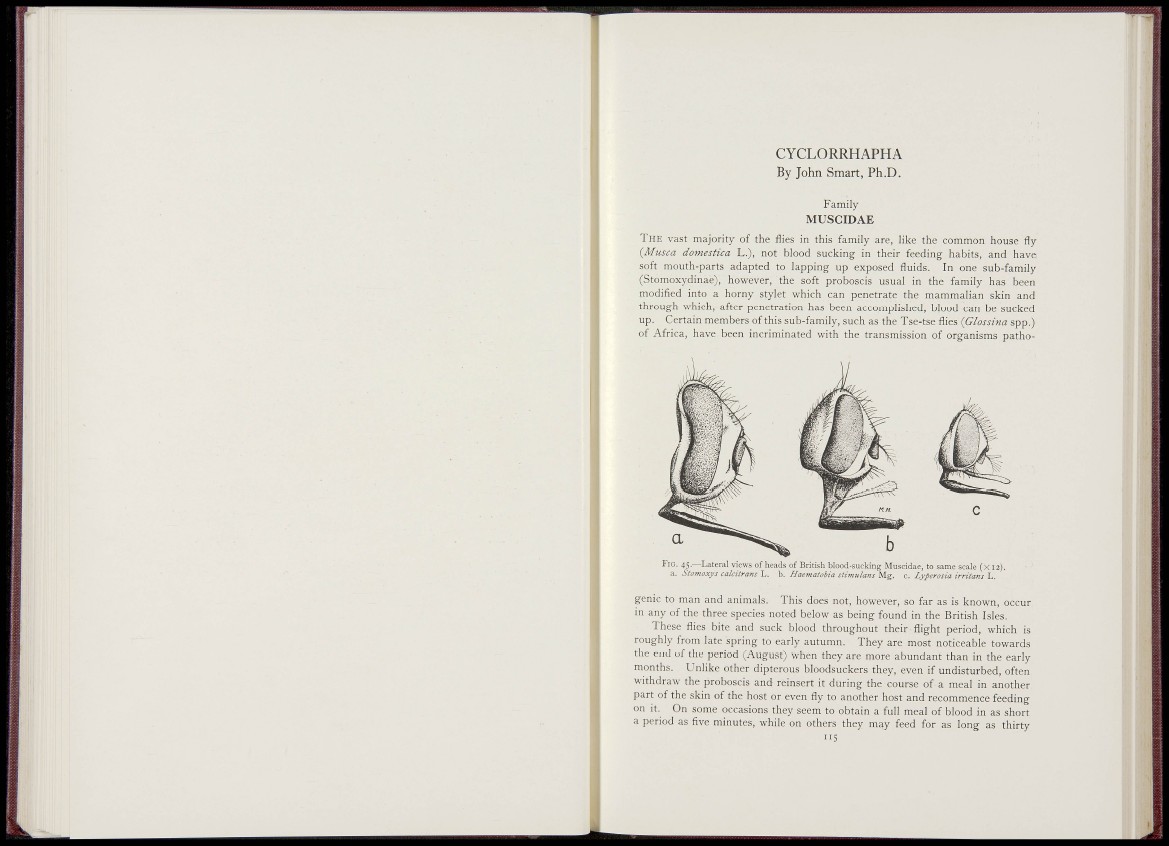
CYCLORRHAPHA
By John Smart, Ph.D.
Family
MUSCIDAE
THE vast majority of the flies in this family are, like the common house fly
{Musca dojnestica L.), not blood sucking in their feeding habits, and have
soft mouth-parts adapted to lapping up exposed fluids. In one sub-family
(Stomoxydinae), however, the soft proboscis usual in the family has been
modified into a horny stylet which can penetrate the mammalian skin and
through which, after penetration has been accomplished, blood can be sucked
up. Certain members of this sub-family, such as the Tse-tse flies (Glossina spp.)
of Africa, have been incriminated with the transmission of organisms patho-
FIG. 45.—Lateral views of heads of British blood-sucking- Muscidae, to same scale (X 12).
a. Stomoxys calcitrans L. b. Haematobia stimula?is Mg. c. Lyperosia irritatis L.
genie to man and animals. This does not, however, so far as is known, occur
in any of the three species noted below as being found in the British Isles.
These flies bite and suck blood throughout their flight period, which is
roughly from late spring to early autumn. They are most noticeable towards
the end of the period (August) when they are more abundant than in the early
months. Unlike other dipterous bloodsuckers they, even if undisturbed, often
withdraw the proboscis and reinsert it during the course of a meal in another
part of the skin of the host or even fly to another host and recommence feeding
on it. On some occasions they seem to obtain a full meal of blood in as short
a period as five minutes, while on others they may feed for as long as thirty
115